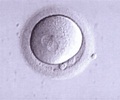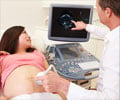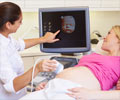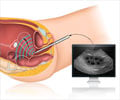An estimated 10 million people in the United States are affected by essential tremor which can impair an individual's ability to perform the simplest tasks.

‘Focused ultrasound can be transmitted with precision through the human skull to target areas deep with the brain - and improve the quality of life of patients with essential tremor.’





An estimated 10 million people in the United States are affected by essential tremor, which unlike Parkinson's disease, has been viewed as a relatively benign disease caused by abnormalities in the brain. However, its disabling aspects - sometimes severe involuntary and rhythmic shaking in the hands and other extremities - can impair an individual's ability to perform the simplest tasks, such as eating or holding a pen. Currently, ET affects an estimated 3 percent of Americans and has been treated by medication, surgical procedures or deep brain stimulation (DBS). The randomized, double-blinded study showed that 56 patients who received the treatment experienced a nearly 50 percent improvement in their tremors and motor function after three months and retained a 40 percent improvement after a year. In contrast, 20 patients who received a sham treatment saw no improvement and were able to cross over into the treatment group three months later.
"We are very excited to have this new noninvasive treatment option for patients who struggle every day with this debilitating neurological disorder," says study co-author Howard M. Eisenberg, MD, the RK Thompson Professor and Chair of Neurosurgery at the UM SOM. "We saw an impressive reduction in tremors in hands and arms and an improvement in quality of life in patients who experienced no relief from medication."
Twenty-two of the patients in the year-long study were treated at the University of Maryland Medical Center (UMMC), with many who received the new therapy achieving up to a 99 percent improvement in their tremors.
In the study, researchers looked at 76 patients who had essential tremor but had not responded to medication. They used magnetic resonance imaging (MRI) to guide ultrasound waves with a millimeter-wide focus through the intact skin and skulls of the study participants, in order to make precise ablations (surgical removal of tissue) in the thalamus, an area deep within the brain thought to play a key role in ET.
Advertisement
The entire procedure lasts two to four hours, and patients are awake and able to interact with the treatment team. Researchers ask patients to draw spirals on a piece of paper, which are then compared with drawings done before the treatment to determine its effectiveness in calming the tremor.
Advertisement
Source-Eurekalert















